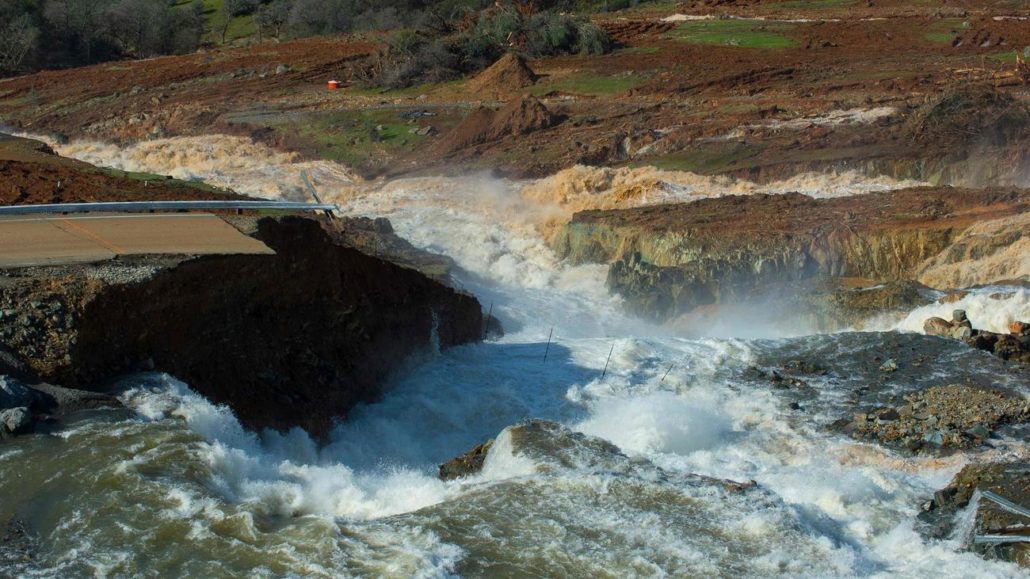Officials released water from an emergency spillway at Lake Oroville that has not been used since the dam was built in 1968. Oroville Dam is the highest dam in the nation and stores water in California’s second largest reservoir. Crews have been closely monitoring the water flow during this historic winter that has filled up most of Northern California’s lakes and reservoirs, pulling much of the state out of its 6-year drought.
Almost 200,000 Evacuated in Lake Oroville Flood Plain
On Sunday, February 12th, 2017, the California Department of Water Resources decided to open the emergency spillway after a large hole in the main spillway developed and debris blocked outlets, causing water levels to reach the emergency spillway’s maximum capacity. As water cascaded over the concrete wall, dirt began to wash downhill into the valley below. The movement of the hillside caused officials to worry that a complete failure was imminent, and they began California’s largest mass evacuation since the 2007 wildfires in Southern California. Nearly 200,000 people that live within the established flood plains were asked to vacate. As of February 14, at 15:00 PST, all evacuation orders had been lifted, but residents are still on edge as more winter storms approach the region.

The area below the Lake Oroville emergency spillway (As of 2/13/2017). (Photo courtesy of http://www.latimes.com)
While residents were told they had an hour to evacuate the area, officials worked on a plan of how to prevent a total failure of the emergency spillway. Rushing water was washing away the anchor that held the emergency spillway’s concrete foundations in place. As the water pushed over the dirt, it caused the hillside to crumble and move downslope, weakening the earth that holds back millions of gallons of water. Water moved at 100,000 cubic-feet-per-second (cfs) over the main spillway, as officials attempted to drop water levels below the emergency spillway’s banks. Their goal was a decrease of at least 50 feet so as to minimize structural damage in the short term, and prepare for more winter storms and snow melt in the coming months. On Monday, February 13, 2017, helicopters began dropping bags of boulders over the heavily eroded ground in an attempt to stop more erosion and strengthen areas below the emergency spillway.
Water Levels Down, but Not Completely Safe Yet
Though no more water flows over the emergency spillway, 100,000 cfs of water continues to rage down the main spillway, and evacuees have no timeframe for when they can return home. As of 1pm PT on February 13, 2017, officials reported that water levels were 9ft below the emergency spillway’s breaching point, and helicopters continued to provide erosion control measures to the hardest hit areas. The most recent estimate for repairs to the spillway is upwards of $200 million, and these repairs cannot begin until water levels are stabilized.
Sources:
http://www.sfgate.com/bayarea/article/Oroville-Dam-emergency-spillway-in-use-for-first-10925628.php





One Comment